N-丁基二乙醇胺 ,N-N-Butyldiethanolamine ,≥98.6%
产品编号:SIGMA-471240| CAS NO:102-79-4| 分子式:C8H19NO2| 分子量:162.2494
本网站销售的所有产品仅用于工业应用或者科学研究等非医疗目的,不可用于人类或动物的临床诊断或者治疗,非药用,非食用,
| 产品名称 | N-丁基二乙醇胺 |
|---|---|
| 英文名称 | N-N-Butyldiethanolamine |
| CAS编号 | 102-79-4 |
| 产品熔点 | −70 °C(lit.) |
| 产品沸点 | 279.1±15.0 °C at 760 mmHg |
| 产品密度 | 1.0±0.1 g/cm3 |
| 产品闪点 | 126.7±0.0 °C |
| 精确质量 | 161.141586 |
| PSA | 43.70000 |
| LogP | 0.88 |
| 外观性状 | 黄色液体带有胺气味 |
| 蒸气压 | 0.0±1.3 mmHg at 25°C |
| 折射率 | 1.476 |
| 溶解性 | miscible |
| 稳定性 | 避免与氧化剂、酸、水接触。 |
| 储存条件 | 储存于阴凉、通风的库房。远离火种、热源、水源。防止阳光直射。保持容器密封。应与氧化剂、酸性物质分开存放,切忌混储。配备相应品种和数量的消防器材。储区应备有泄漏应急处理设备和合适的收容材料。 |
相关文档
化学品安全说明书(MSDS)
下载MSDS质检证书(COA)
相关产品
| 符号 |
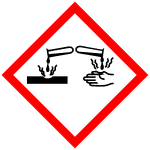
GHS05 |
|---|---|
| 信号词 | Danger |
| 危害声明 | H314 |
| 警示性声明 | P280-P305 + P351 + P338-P310 |
| 个人防护装备 | Faceshields;full-face respirator (US);Gloves;Goggles;multi-purpose combination respirator cartridge (US);type ABEK (EN14387) respirator filter |
| 危害码 (欧洲) | C:Corrosive |
| 风险声明 (欧洲) | R34 |
| 安全声明 (欧洲) | S26-S36/37/39-S45 |
| 危险品运输编码 | UN 2735 8/PG 2 |
| WGK德国 | 1 |
| RTECS号 | KK0525000 |
| 包装等级 | II |
| 危险类别 | 8 |
| 海关编码 | 29221980 |
Synonym: 2,2'-(Butylimino)diethanol; N-Butyldiethanolamine; Ethanol, 2,2'-(butylimino)di-; Bis(beta-hydroxyethyl)butylamine; N-Butyl-2,2'-iminodiethanol; Butlydiethanolamine SECTION 2 - COMPOSITION, INFORMATION ON INGREDIENTS
Risk Phrases: 36/37/38 SECTION 3 - HAZARDS IDENTIFICATION EMERGENCY OVERVIEW Irritating to eyes, respiratory system and skin.The toxicological properties of this material have not been fully investigated. Potential Health Effects Eye: Causes severe eye irritation and possible injury. Skin: Causes skin irritation.
Ingestion: Causes gastrointestinal tract irritation. Inhalation: Causes respiratory tract irritation. Chronic: No information found. SECTION 4 - FIRST AID MEASURES Eyes: Immediately flush eyes with plenty of water for at least 15 minutes, occasionally lifting the upper and lower eyelids. Get medical aid immediately. Skin: Get medical aid. Flush skin with plenty of water for at least 15 minutes while removing contaminated clothing and shoes. Wash clothing before reuse. Ingestion: If victim is conscious and alert, give 2-4 cupfuls of milk or water. Never give anything by mouth to an unconscious person. Get medical aid. Inhalation: Remove from exposure and move to fresh air immediately. If not breathing, give artificial respiration. If breathing is difficult, give oxygen. Get medical aid. Notes to Physician: Treat symptomatically and supportively. SECTION 5 - FIRE FIGHTING MEASURES General Information: As in any fire, wear a self-contained breathing apparatus in pressure-demand, MSHA/NIOSH (approved or equivalent), and full protective gear. During a fire, irritating and highly toxic gases may be generated by thermal decomposition or combustion. Water may be ineffective. Material is lighter than water and a fire may be spread by the use of water. Vapors may be heavier than air. They can spread along the ground and collect in low or confined areas. Extinguishing Media: Use agent most appropriate to extinguish fire. Use water spray, dry chemical, carbon dioxide, or appropriate foam. SECTION 6 - ACCIDENTAL RELEASE MEASURES General Information: Use proper personal protective equipment as indicated in Section 8. Spills/Leaks: Absorb spill with inert material (e.g. vermiculite, sand or earth), then place in suitable container. Clean up spills immediately, observing precautions in the Protective Equipment section. Provide ventilation. SECTION 7 - HANDLING and STORAGE Handling: Wash thoroughly after handling. Remove contaminated clothing and wash before reuse. Avoid contact with eyes, skin, and clothing. Keep container tightly closed. Avoid ingestion and inhalation. Use with adequate ventilation. Storage: Keep container closed when not in use. Store in a tightly closed container. Store in a cool, dry, well-ventilated area away from incompatible substances. SECTION 8 - EXPOSURE CONTROLS, PERSONAL PROTECTION Engineering Controls: Facilities storing or utilizing this material should be equipped with an eyewash facility and a safety shower. Use adequate ventilation to keep airborne concentrations low. Exposure Limits CAS# 102-79-4: Personal Protective Equipment Eyes: Wear appropriate protective eyeglasses or chemical safety goggles as described by OSHA's eye and face protection regulations in 29 CFR 1910.133 or European Standard EN166. Skin: Wear appropriate protective gloves to prevent skin exposure. Clothing: Wear appropriate protective clothing to prevent skin exposure. Respirators: A respiratory protection program that meets OSHA's 29 CFR 1910.134 and ANSI Z88.2 requirements or European Standard EN 149 must be followed whenever workplace conditions warrant respirator use. SECTION 9 - PHYSICAL AND CHEMICAL PROPERTIES Physical State: Viscous liquid Color: pale yellow Odor: None reported. pH: Not available. Vapor Pressure: 1 mm Hg @ 25 C Viscosity: Not available. Boiling Point: 273.0 - 275.0 deg C @ 741.00m Freezing/Melting Point: -70 deg C Autoignition Temperature: 260 deg C ( 500.00 deg F) Flash Point: 126 deg C ( 258.80 deg F) Explosion Limits, lower: 1.10 vol % Explosion Limits, upper: 6.50 vol % Decomposition Temperature: Solubility in water: miscible Specific Gravity/Density: .9680g/cm3 Molecular Formula: C8H19NO2 Molecular Weight: 161.24 SECTION 10 - STABILITY AND REACTIVITY Chemical Stability: Stable under normal temperatures and pressures. Conditions to Avoid: Incompatible materials, strong oxidants. Incompatibilities with Other Materials: Strong oxidizing agents. Hazardous Decomposition Products: Nitrogen oxides, carbon monoxide, carbon dioxide, nitrogen. Hazardous Polymerization: Will not occur. SECTION 11 - TOXICOLOGICAL INFORMATION RTECS#: CAS# 102-79-4: KK0525000 LD50/LC50: CAS# 102-79-4: Oral, rat: LD50 = 4250 mg/kg. Carcinogenicity: N-n-Butyldiethanolamine - Not listed by ACGIH, IARC, or NTP. Other: See actual entry in RTECS for complete information. SECTION 12 - ECOLOGICAL INFORMATION SECTION 13 - DISPOSAL CONSIDERATIONS Dispose of in a manner consistent with federal, state, and local regulations. SECTION 14 - TRANSPORT INFORMATION IATA Not regulated as a hazardous material. IMO Not regulated as a hazardous material. RID/ADR Not regulated as a hazardous material. SECTION 15 - REGULATORY INFORMATION European/International Regulations European Labeling in Accordance with EC Directives Hazard Symbols: XI Risk Phrases: R 36/37/38 Irritating to eyes, respiratory system and skin. Safety Phrases: S 24/25 Avoid contact with skin and eyes. WGK (Water Danger/Protection) CAS# 102-79-4: 1 Canada CAS# 102-79-4 is listed on Canada's DSL List. CAS# 102-79-4 is not listed on Canada's Ingredient Disclosure List. US FEDERAL TSCA CAS# 102-79-4 is listed on the TSCA inventory. SECTION 16 - ADDITIONAL INFORMATION MSDS Creation Date: 10/14/1998 Revision #2 Date: 3/18/2003 The information above is believed to be accurate and represents the best information currently available to us. However, we make no warranty of merchantability or any other warranty, express or implied, with respect to such information, and we assume no liability resulting from its use. Users should make their own investigations to determine the suitability of the information for their particular purposes. In no way shall the company be liable for any claims, losses, or damages of any third party or for lost profits or any special, indirect, incidental, consequential or exemplary damages, howsoever arising, even if the company has been advised of the possibility of such damages. SECTION 16 - ADDITIONAL INFORMATION N/A |
|
~73% 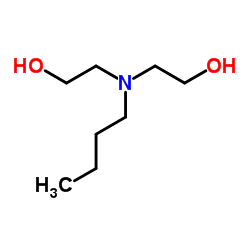
102-79-4 |
| 文献:Synthetic Communications, , vol. 31, # 18 p. 2817 - 2822 |
|
~% 
102-79-4 |
| 文献:Justus Liebigs Annalen der Chemie, , vol. 315, p. 128 |
|
~% 
102-79-4 |
| 文献:Tetrahedron Letters, , vol. 22, # 28 p. 2623 - 2626 |
| 上游产品 5 | |
|---|---|
| 下游产品 8 | |

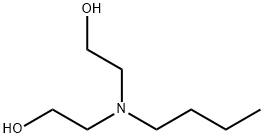
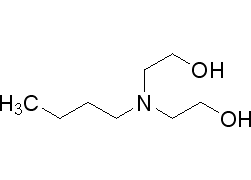


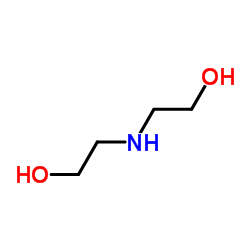

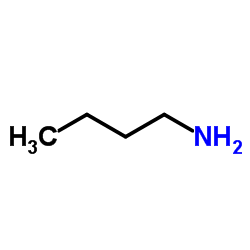
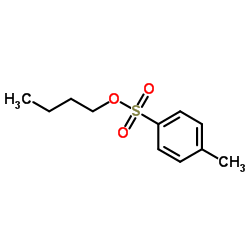
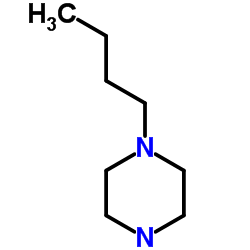

![9-butyl-6,12-dioxa-9-aza-5-silaspiro[4.7]dodec-2-ene结构式](/20230522/69656-49-1.png)
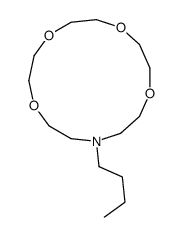
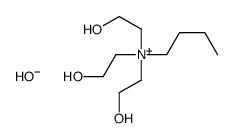
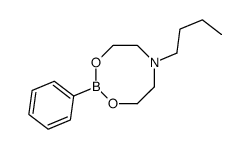
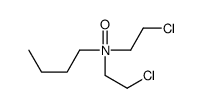
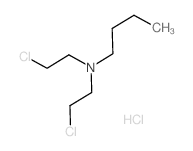





 浙公网安备 33010802013016号
浙公网安备 33010802013016号